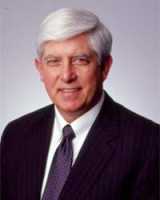13 Jun ‘Epi-Chip’ Aims To Reconstruct Entire Infection Exposure History From Drop of Blood
MedicalResearch.com Interview with:

Dr. Donald Burke
Donald S. Burke, M.D.
Dean of the University of Pittsburgh Graduate School of Public Health
Director of the University of Pittsburgh Center for Vaccine Research
MedicalResearch.com: What is the background for this study? What are the main findings?
Dr. Burke: At the University of Pittsburgh we developed a unique method for detecting antibodies in the blood of patients in a proof-of-principle study that opens the door to development of simple diagnostic tests for diseases for which no microbial cause is known, including auto-immune diseases, cancers and other conditions.
We used a technique pioneered by co-author Thomas Kodadek, Ph.D., of the Scripps Research Institute, that synthesizes random molecular shapes called “peptoids” hooked onto microscopic plastic beads. The technique can produce millions of molecular shapes. The peptoids are not organic, but if they match to the corresponding shape on an antibody, that antibody will connect to them, allowing the scientist to pull out that bead and examine that peptoid and its corresponding antibody.
My team chemically generated a huge library of random molecular shapes. Then, using blood from HIV-infected patients and from non-infected people, we screened a million of these random molecular shapes to find the ones that bound only to antibodies present in the blood of HIV-infected patients, but not the healthy controls. No HIV proteins or structures were used to construct or select the peptoids, but the approach, nonetheless, successfully led to selection of the best molecular shapes to use in screening for HIV antibodies.
We then resynthesized that HIV-antibody-targeting peptoid in mass and tested it by screening hundreds of samples from the Multicenter AIDS Cohort Study (MACS), a confidential research study of the natural history of treated and untreated HIV/AIDS in men who have sex with men (supported by the National Institutes of Health). Study co-author Charles Rinaldo, Ph.D., chair of Pitt Public Health’s Department of Infectious Diseases and Microbiology and director of the Pittsburgh arm of the MACS, selected the samples, but blinded the testers to which samples were HIV-positive or -negative. The test distinguished between the samples of HIV-positive blood and HIV-negative blood with a high degree of accuracy.
MedicalResearch.com: What should readers take away from your report?
Dr. Burke: This ‘needle-in-a-molecular haystack’ approach is a new way to develop diagnostic assays. The method does not rely on starting with known viral components. This is important because there are conditions for which there isn’t a known antigen, such as newly emerged epidemics, autoimmune diseases or even responses to traumatic injury. This technology means that we may be able to take a single drop of blood from a patient and detect antibodies to all manner of infections, cancers or other conditions they may be carrying or been exposed to.
MedicalResearch.com: What recommendations do you have for future research as a result of this study?
Dr. Burke: We hope that this is the first step toward development of an ‘Epi-chip’ that can be used to reconstruct a person’s entire exposure history. Much more research is needed to reach that point.
MedicalResearch.com: Is there anything else you would like to add?
Dr. Burke: Additional co-authors on this study are Tricia L. Gearhart, Ph.D., Ronald C. Montelaro, Ph.D., Mark E. Schurdak, Ph.D., Yongseok Park, Ph.D., Kazi Islam, Raymond Yurko and Ernesto T.A. Marques Jr., M.D., Ph.D., all of Pitt; and Chris D. Pilcher, M.D., of the University of California, San Francisco.
This work was funded by Bill & Melinda Gates Foundation grant OPP1068374. In addition to the MACS, the Consortium for the Evaluation and Performance of HIV Incidence Assays also provided blood samples.
MedicalResearch.com: Thank you for your contribution to the MedicalResearch.com community.
Citation:
J Immunol Methods. 2016 May 12. pii: S0022-1759(16)30093-X. doi: 10.1016/j.jim.2016.05.001. [Epub ahead of print]
Selection of a potential diagnostic biomarker for HIV infection from a random library of non-biological synthetic peptoid oligomers.
Gearhart TL1, Montelaro RC1, Schurdak ME2, Pilcher CD3, Rinaldo CR4, Kodadek T5, Park Y4, Islam K6, Yurko R6, Marques ET Jr7, Burke DS8.
Note: Content is Not intended as medical advice. Please consult your health care provider regarding your specific medical condition and questions.
More Medical Research Interviews on MedicalResearch.com.
[wysija_form id=”5″]
Last Updated on June 13, 2016 by Marie Benz MD FAAD
